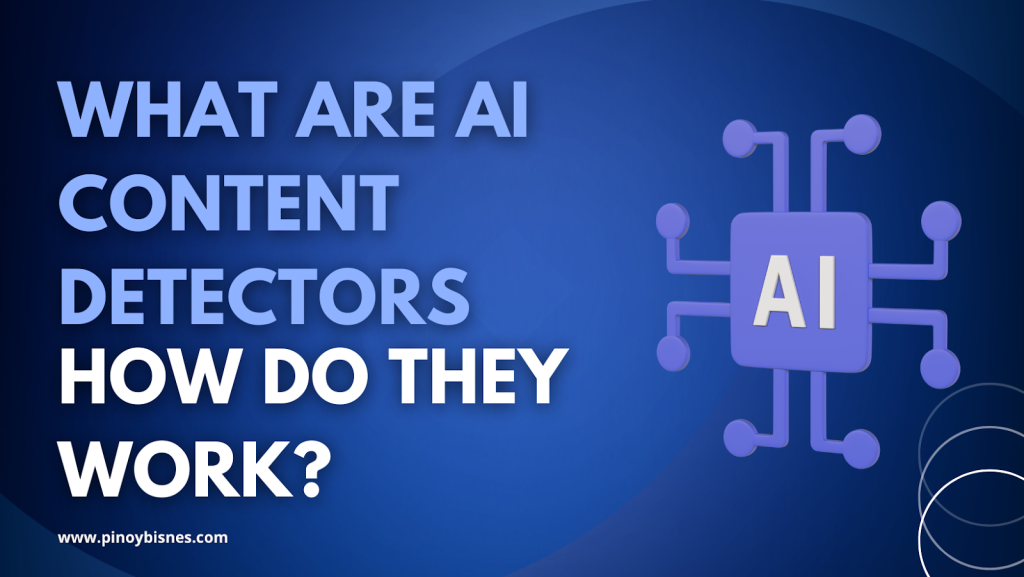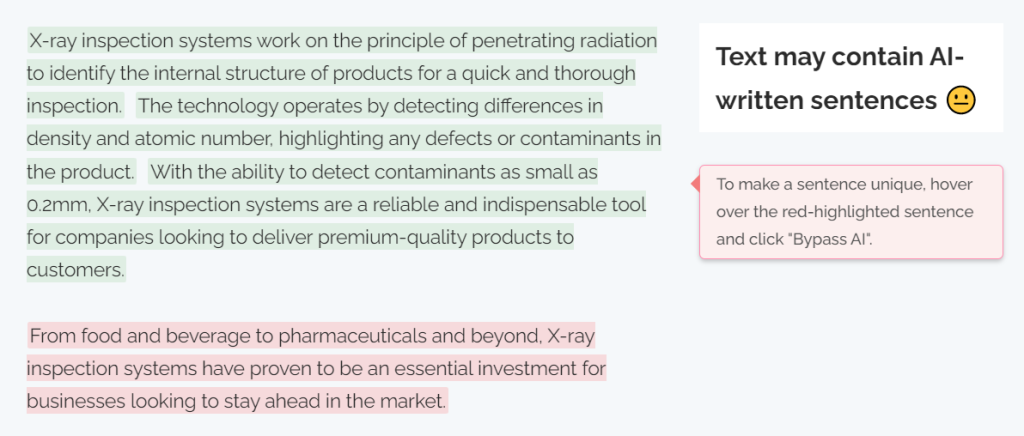
Have you noticed the buzz around artificial intelligence lately? Every other tweet mentions how AI will soon be taking over our jobs, leaving us all unemployed.
While that makes for an exciting sci-fi plot, the reality is that we’re not quite there yet.
However, the good news is that employees can absolutely leverage AI to boost their productivity and climb the corporate ladder faster than ever before.
From launching groundbreaking language models like ChatGPT to more refined writing tools like Paraphrarsingtool.ai’s Chatbabu, AI is rapidly emerging as one of the most powerful tools in a digital employee’s toolkit.
But one burning question lingers around: can AI-generated content be detectable?
The answer, to be honest, is not really.
AI detection relies on pattern recognition, and as large-language models continue to advance, it’s becoming increasingly difficult to differentiate between robot-generated words and those penned by human hands.
This increasing sophistication opens up endless opportunities for automated writing and text analysis, revolutionizing how we create and consume digital content.
Why Does AI Text Detection Even Matter in Content Creation?
As AI becomes more prevalent in fields like journalism, digital marketing, and even law, the need for AI text detection is becoming increasingly crucial.
While AI-generated content isn’t necessarily inferior, it’s sometimes beneficial to know whether you’re dealing with an article that was written by a computer or a human.
In some cases, even academic researchers struggle to differentiate between the two.
However, in a world where thesis papers produced by AI writers are published, the potential safety implications are alarming. Being able to identify AI-generated text allows us to evaluate the efficacy of the content up to a certain human standard, ensuring that we can trust the information we’re consuming.
On the bright side, knowing which pieces of copy were written with AI can help businesses determine if it’s worth investing in AI Writing tools.
Some tasks simply don’t require much human creativity, and if you come across a piece of marketing copy that was written with AI, you may benefit from using those same tools to recreate it yourself.
By leveraging AI in this way, you can streamline your workflow and focus on other aspects of your business.
How Do AI Content Detectors Work?
AI content detectors work by utilizing advanced algorithms and models to analyze and evaluate written content. Here’s a closer look at the key steps involved in the process:
The first step in building an AI content detector is to collect a substantial amount of data to train the model. This can include a range of written content such as news articles, academic papers, social media posts, and more.
Once the data is collected, it goes through a pre-processing phase where it is cleaned and formatted to ensure that it is suitable for analysis. The next step is to extract relevant features from the data, such as word frequency, sentence structure, and syntax.
With the data pre-processed and features extracted, the model is ready for training. The model is fed a vast amount of data that has been labeled as either human-written or AI-generated. As the model is exposed to more data, it learns to recognize patterns and distinguish between human and AI-written content.
Once the model is trained, it’s time to test it and evaluate its accuracy. This involves feeding the model new data that it has not seen before and comparing its predictions to known outcomes. This process helps to refine the model and improve its accuracy over time.
By following these key steps, AI content detectors are able to analyze and evaluate written content with a high degree of accuracy. Thereby, you can identify AI-generated content and evaluate it against human-written content.
Advantages and Disadvantages of AI Content Detectors
AI content detectors have their own set of advantages and disadvantages. While they can offer a lot of benefits in terms of detecting and evaluating content, they also come with their own set of limitations and potential drawbacks.
Advantages:
- Speed and Efficiency: AI content detectors can quickly scan through vast amounts of content and identify patterns that might not be immediately obvious to humans. This can help speed up the content review process and save a lot of time and effort.
- Consistency: Unlike humans, AI content detectors can be trained to identify specific patterns and consistently apply those criteria across a large volume of content. This helps ensure that content is evaluated objectively and consistently.
- Improved Accuracy: AI content detectors can also help improve the accuracy of content review by minimizing errors and subjectivity that may occur when humans evaluate content.
Disadvantages:
- Limited Contextual Understanding: AI content detectors may not be able to fully understand the nuances of language, culture, or subject matter, which can lead to errors in evaluation.
- Limited Flexibility: AI content detectors are only as good as the training data they receive. If there are changes in the patterns or characteristics of content, the AI model may need to be retrained, which can be time-consuming and costly.
- Ethical Concerns: AI content detectors can raise ethical concerns, particularly around issues like bias and privacy. It is important to ensure that AI models are trained and evaluated fairly and that they are not used to discriminate against certain individuals or groups.
Paraphrasingtool.ai: An Unmatched AI Content Detection Solution
Paraphrasingtool.ai’s products are powered by avant-garde artificial intelligence, which features an AI content detector that ensures the accuracy and originality of the paraphrased content. Its exact usage of AI content detection is as follows:
Highly intelligent AI content detection Algorithms
Paraphrasingtool.ai offers a cutting-edge AI content detection solution that has revolutionized the way AI content is detected with higher accuracy.

This tool employs state-of-the-art machine learning algorithms and natural language processing techniques to detect and flag harmful AI-generated content in real-time.
Smart and efficient
Paraphrasingtool.ai is designed to be highly efficient and smart, making it an ideal solution for platforms that deal with large volumes of AI-generated content.
Its ability to analyze complex patterns and nuances enables it to accurately identify a wide range of problematic AI content, including hate speech, spam, and fake news.
Cost-effective
By automating the AI content detection process, Paraphrasingtool.ai is free to use so it can reduce the need for human detectors, resulting in significant cost savings.
However, like all AI content detection solutions, Paraphrasingtool.ai is not without its challenges and limitations. Ethical concerns, such as the risk of bias and discrimination, must be carefully considered and addressed to ensure that the tool is used in a responsible and ethical manner.
Despite these challenges, the potential benefits of Paraphrasingtool.ai and other AI content detection solutions are clear. By improving the efficiency, accuracy, and consistency of AI content detection, this AI tool has the potential to revolutionize the online user experience and create a safer, more positive online environment for all.
Future of AI Content Detectors
AI’s increasing dominance in the writing industry has raised concerns about how it will impact various fields, including education, literature, and industry. With ChatGPT already making waves, it’s difficult to determine whether a piece of content was created by a human or an AI.
Nonetheless, there’s no denying that generative writing tools will only become more advanced and nuanced over time.
It’s best to use intuition and detection tools if you’re unsure about the source of a piece of content. The next few years will be interesting to watch as AI technology continues to develop and integrate with society. How far will AI go in creating sophisticated and creative content? We’ll just have to wait and see.
